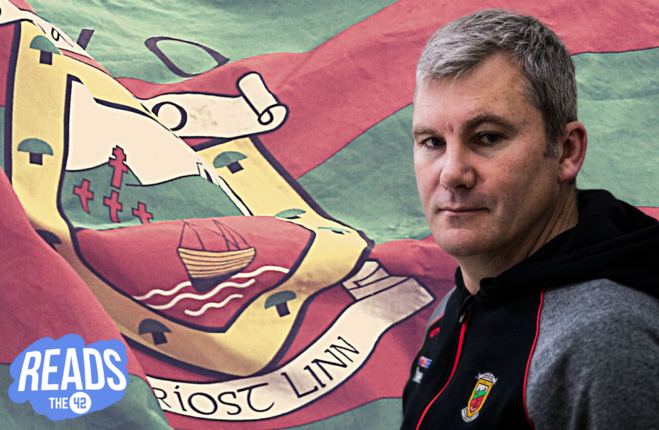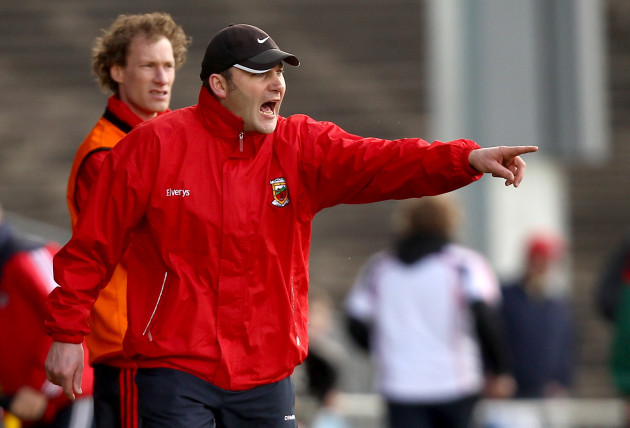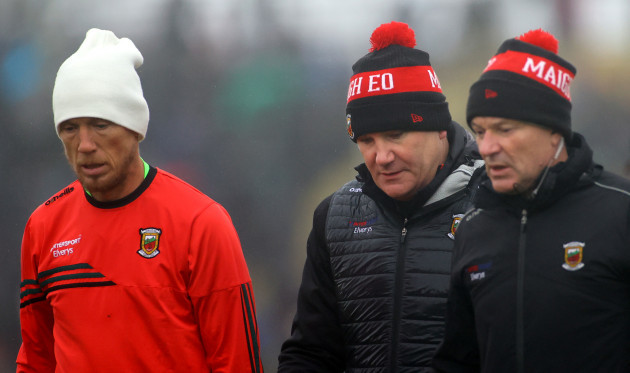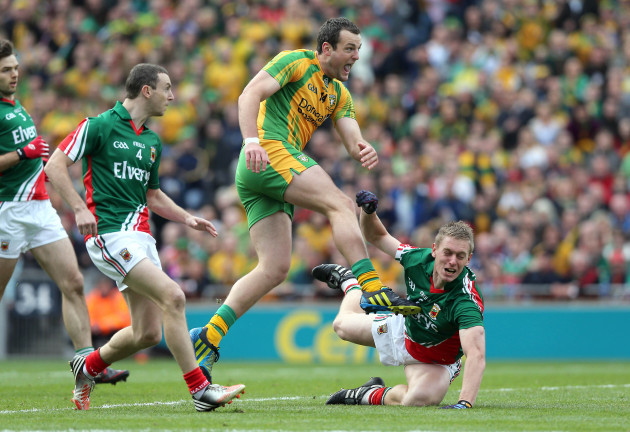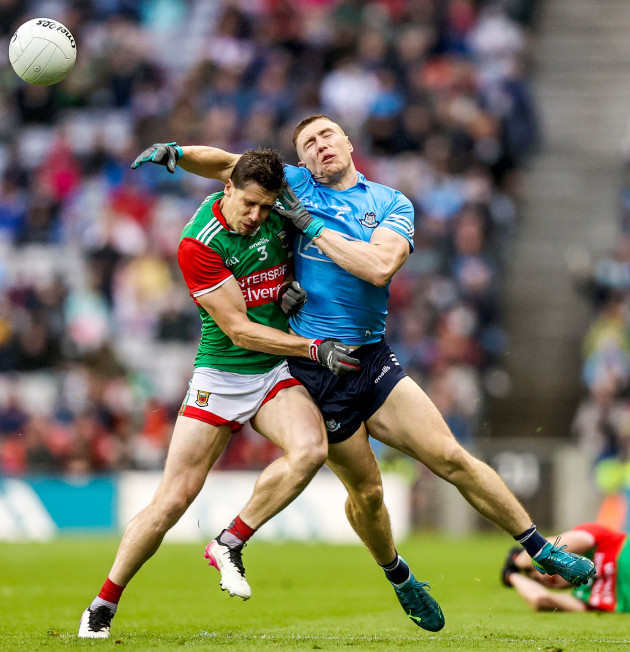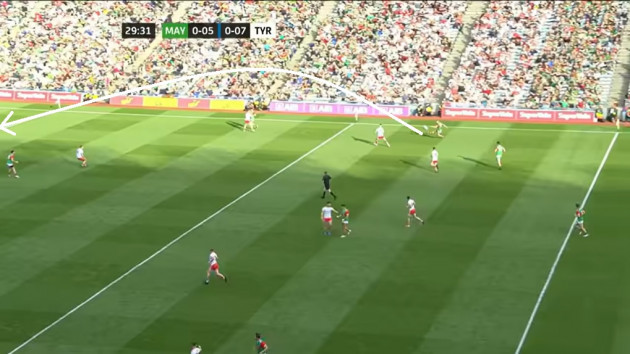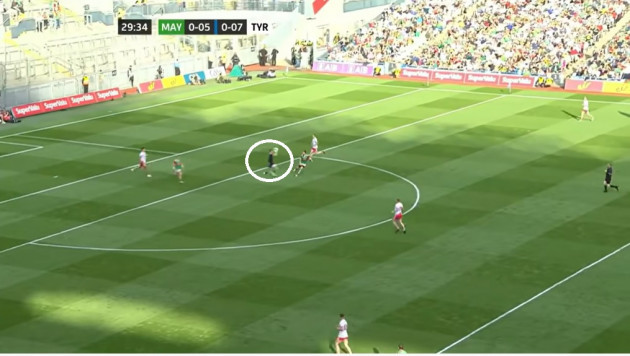IN THE AFTERMATH of an embarrassing championship campaign that saw Mayo outclassed by Sligo in the first round of the 2010 Connacht championship and beaten by Longford in the qualifiers, 19 of their most passionate GAA people were asked to gather and undertake a strategic review of football in the county.
The steering committee included representatives from every corner and a variety of clubs. In the end, they proposed seven sweeping recommendations covering everything from financial and fundraising plans to governance and public relations.
For matters on the field, they advised that a full-time paid director of coaching be appointed and the creation of a Mayo Gaelic football Academy for players aged 18-22.
In their infinite wisdom, the county board decided to ditch this action plan after it was finished and proceed with their own. Perhaps this is unsurprising given that the original document was scathing about ‘the inadequacy of information provided by Mayo County Board’.
Meanwhile, the search for John O’Mahony’s replacement had been whittled down to three. From left field, a 38-year-old Ballintubber native emerged as the leading candidate. His coaching education was extensive. Repeatedly he referenced Clive Woodward’s book and how he had transformed English rugby from top to bottom. The county needed a comparable overhaul.
As has been extensively charted repeatedly during his two stints, James Horan did exactly that, constructing and coordinating a high-performance environment that has yielded seven Connacht titles, seven All-Ireland semi-finals and four trips to the final under his watch.
- See sport differently with The42 Membership and get closer to the stories that matter with exclusive analysis, insight and debate. Click here to find out more>
While that strategic plan was discarded, some of its recommendations registered. When Horan took charge, he conducted a physical and skills analysis of the whole squad. Tests incorporated elements from both.
With the help of Ed Coughlan, he transformed their strength and conditioning programme. Barry Solan later added to the construct along with Conor Finn. This is a legacy that lives on.
“When I came to Mayo I did fitness testing and generic work to see where they were at,” Coughlan recalls.
“Then I came back and handed out programmes to the players. I got some of the strangest looks ever. ‘Hang on, mine is different to his?’ Why?’
“Because you are not him. One of you is 20 years old, one is 28. A couple of years in, Conor O’Shea came into the squad. Conor, Aidan and Seamus were all in the same squad playing similar positions. Three boys from the same family in the same team on three completely different training programmes.
“Players needed bespoke and tailored programmes. That was double Dutch to them. Now everyone does that.”
Last November, Horan held a combine in the Dome for over 30 players. It was a combination of physical testing, skills assessments and tactical sessions. From that group emerged the likes of Leaving Cert student Sam Callinan and U20 Frank Irwin, who both debuted for the senior side in the league last month.
It even produced the odd coach too. In 2017, then-Mayo GAA chairperson Mike Connelly met with Ciaran McDonald to discuss the possibility of helping out with the U14s and U15s in the rejuvenated academy system. This was the starting point for his ascension to the sideline alongside Horan.
James Horan’s immensely positive impact across the board is unquestionable. From the moment he assumed the mantle, they did things differently.
Planning alternative travel routes for their opening Championship game against London should the ash cloud interrupt their flights. Ruth Kilcawly came in as a team nutritionist to help with individualised plans. Their video analysis set-up was revolutionised, to the point where they now occasionally use drones in training. They recruited journalist and sports psychologist Kieran Shannon to harden the mind. The team’s values were printed off on cue cards and distributed.
When it comes to media, Horan has always relied on a tight leash and wide berth. Their engagement was stripped back to almost nothing, reporters treated like potholes and steered well clear of whenever possible.
But they too have a function. The Mayo boss has utilised local media when necessary, such as to address the ill-founded rumours of Ciaran McDonald’s departure or vent frustration at the college competitions’ fixtures issue. To succeed, he needed utter control. Of his players. Of scheduling. Of the narrative.
“You hear this word tradition bandied about. But it does impact,” Horan said in a 2014 Irish Times interview.
“Maybe in the lead up to a game more so than anything else. I always remember about Kerry, if they are in a big match, how every ex-player, how every journalist, from Eoin Liston to Darragh Ó Sé to Tom Ó Sé to Dara Ó Cinnéide and whoever else, what you hear is positivity and alignment of everyone about how things are great in Kerry.
“I think that helps them and feeds into the tradition and confidence and belief that they have. There are various little things that give them a little pep up.”
For skills, renowned coaches Donie Buckley and later Cian O’Neill came on board. Horan saw how the sport was evolving and the shift in the world around it. He not only foresaw the drive towards professionalism, he implemented it. The godfather of modern Mayo. A much-needed organiser in the land of madness.
This is why Horanball has always been based on pace and power. They have built a massive engine over the course of this decade. A production line of multi-functional footballers. Defenders who get forward and forwards who defend. They don’t use sweepers or sit back. Embedded on their calling card is a guarantee that they will front up and attack. All gas, no brakes. Always.
And that’s the problem.
Jim McGuinness knew exactly what was coming down the tracks in 2012. As he recalled in his autobiography, the Donegal boss sat in his office late one night after rewatching Mayo’s victory over Dublin. He wrote out a ten-point path to All-Ireland glory.
They would use the long diagonal ball because “Mayo will not change. They are firm in their convictions. They will not play a sweeper.”
They would match the running game with a defensive shape driving forward. Their sweeper would play between the middle and right corner position because Mayo’s key kickers, Kevin McLoughlin and Aidan O’Shea, are left-footed and kick across themselves. O’Shea’s boot would have to be doubled up on because he is their best passer.
Donegal needed a fast defensive shape because once it was in place, Mayo struggle to break it down. There was focus on the long kick-outs and the dink ball and finally, Donegal’s shot-to-score ratio was 60% for the season. Mayo’s was 53%. Execute the gameplan and the odds were in their favour. A four-point triumph followed.
Fast forward nine years later, rinse and repeat. Mayo’s shot-to-score ratio against Tyrone in the 2021 All-Ireland final was 35% from play, 46% total. Again, they were vulnerable to the long ball and conceded two goals from it.
Again, they met a fast defensive shape and struggled to break it down. All except one of Tyrone’s starts from turnovers were inside their own 45. From these deep turnovers, they scored 1-5. They weren’t worried about turning Mayo over higher up the field because they didn’t need to. The running game hit the same wall.
“James was always hugely brave in his approach. A big trust element and knowing what he had. Brave but when you look back, in ways there was an element of brainless about it,” explains former Mayo forward Mickey Conroy.
“Those defenders were perfectly suited to that. Keith Higgins, four-time All-Star. Colm Boyle, four-time All-Star. Lee Keegan. Donal Vaughan. It is easier to go flat out with that talent there.
“It is still the same. I was just looking at the team for Saturday. Look at that back six.
“I was doing co-commentary on the Dublin game. They must be doing an unbelievable amount of one-on-one stuff in training. Every player bar corner-forward maybe, they look for the turnover and high press. Consistently working.”
Horan has manufactured a team of formidable athletes. It was always the main priority.
As he surveyed the wreckage that was the 2019 semi-final Dublin demolition job, the Mayo boss identified one aspect they needed to work on most.
“Their running is very, very strong and their conditioning is very good,” he said. While stressing he was not trying to make excuses, the difference told. “Maybe our legs got a bit heavy in that period.”
When the pandemic arrived, Mayo made the most of it. No one better epitomises that than Lee Keegan. Con O’Callaghan ran him ragged in 2019. Their stalwart looked to be on the wane.
Suddenly, he had a window and a chance to reset. Rebuild. Prior to that, there were four surgeries in three years. Trouble with his ankle, shoulder and hip.
Keegan went to work during lockdown. He created a home gym; he had the capability to work from home and space locally to train. Fast forward to 2021, and there he was blitzing O’Callaghan and Croke Park.
“Conor Finn (S&C) has us primed for running for 90 minutes,” said Lee Keegan after.
When they beat Leitrim earlier in the summer, Mayo stayed on the field afterwards to perform 80m sprints. Dublin had weaponised their conditioning in the form of recycled possession and extended bouts of play. The reason Mayo were able to go toe-to-toe with them was that they possessed similar power.
Even after Horan left, Mayo maintained this energy. It was their greatest strength and consequently, their weakness.
“We designed a plan specifically for Mayo and it would bamboozle them. For three years, they had no answer for it,” former Galway manager Kevin Walsh recalled in his autobiography.
“They finally edged us in 2019, when we were hobbled by injuries, but not before we caused them all kinds of bother. Mayo’s threats were from off-the-shoulder runners down the centre. Dublin struggled with this tactic. Keith Higgins, Colm Boyle, Lee Keegan, Aidan O’Shea and Paddy Durcan were amongst those who invariably prospered from it.
“We dropped off and let them have their kick-outs before sending them down the sewers of lanes one and five — the sideline channels. Using coaxing pressure, a line of three people would shepherd them to each sideline. They were going where we wanted them to go, not where they wanted.”
During the Galway warm-up, Walsh pointed at a gate on the sideline near the 45-metre line. Don’t be afraid to let Mayo go that far, he told his squad. Entice them deep. Strike there and force countless turnovers, rushed shots, the same mistakes.
Despite those defeats, there is no doubt that Stephen Rochford was more tactically astute and a risk-taker, whether it be playing Alan Dillion as a floating centre-forward against Tyrone in 2016 or using Aidan O’Shea to muzzle Kieran Donaghy a year later.
Compare such innovation to Mayo’s approach to the Kerry full-forward in 2014. It was obvious where Donaghy would be deployed for the replay. Still, Mayo had no answer.
Playing the game at one pace is all well and good if the opposition engages on equal terms. When they don’t, Mayo struggle. Open lanes become blind alleys.
Familiar failings haunted them in the 2021 final. Their finishing was woeful. For all their physical power, skill execution under red-hot pressure remains a weak point. They registered a litany of glaring wides. Goal chances went a-begging because of one-sided shooters.
Even when they did try to kick long, the implementation was inadequate. And make no mistake, they did try.
Mayo kicked long to Aidan O’Shea, a proven ball winner but not a finisher. For that to work, it needs a second phase or support runners. Too often they ballooned ball in that gave inside forwards no chance.
An example of this was when Bryan Walsh kicked a floating ball deep into Tyrone’s half.
Niall Morgan was able to come off his line and claim it. Immediately, he kicked a long ball which ended in a Tyrone goal chance.
Encouragingly, there is no need to reinvent the wheel here. Their approach is enough to overpower the vast majority of intercounty teams and thrust them to the podium. It is a style that needs subtle change. A scalpel rather than a sledgehammer.
“Wayne Smith, the former All Black coach, arguably one of the greatest coaches ever. He said previously ‘I am not an All Blacks coach.’ All the coaches in the clubs around the country are in control of that,” says Coughlan.
“‘Our job is to bring them together and give a vision.’
“It’s not as extreme in Gaelic games because inter-county players spend their time away from clubs, but the reason they get into the set-up is because of what they did with their clubs.
“Look at the gold standard teams and how their players are defined. Kerry or Dublin in their pomp. Their players were defined by their capacity to kick and catch off both sides.”
Last month, Mayo ended a nine-game losing streak against Dublin in the league. In that game, they kick-passed into Dublin’s 45-metre line 25 times. Their intent was obvious from the throw-in. Jordan Flynn caught the ball and delivered it long for Diarmuid O’Connor. In total, 2-5 of their 2-11 came from it.
Great play from @MayoGAA leading to a goal from Aiden Orme v @DubGAAOfficial in The Allianz Football League #GAANOW pic.twitter.com/JQbSjLduSw
— The GAA (@officialgaa) February 19, 2022
In 2012, Mickey Conroy finished with 2-1 against Down in the All-Ireland quarter-final. It instilled a confidence that had him ready to kick on again next time out.
However, a hamstring injury nearly ruled him out of the semi-final against Dublin. It forced him to practise shooting with his left leg all week. At one point, he turned to Kieran Shannon and made a prediction: ‘If I kick a point on my left foot, we are going to the All-Ireland final.’
Early in the first half, Aidan O’Shea delivered a perfect bounce pass in front of him. Mick Fitzsimons was scrambling, the chance was there. Conroy turned on his left and scored.
“I know people hate talk of learnings and lessons, but the big-game experience really does reinforce that. All the talk about transition in Dublin or Tyrone losing players, look at the turnover in Mayo. It was nearly a new team last year. You want it to be at a stage where it is not new, it is deja vu. It just takes a small change.
“Páidí Ó Sé said it. A grain of rice… if it is lads kicking a ball that bit extra or being a bit more adventurous on All-Ireland final day. It really isn’t going to take a lot more for Mayo. I think they will be right there again.”
Just a kick away.
See sport differently with The42 Membership and get closer to the stories that matter with exclusive analysis, insight and debate. Click here to find out more>
